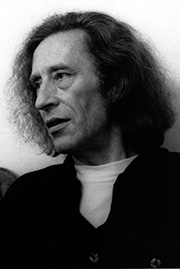A ten-minute orchestral tutti, comprising an “archaic unison movement” and “iambic percussive accents”, opens the single movement First Symphony by Heinz Winbeck with almost elemental power. This is followed by more peaceful passages, but the basic mood of the music remains anxious and driven. In between, allusions to, or direct quotations from Gustav Mahler’s 3rd and 10th Symphonies are constantly heard, as an expression in sound of longing and evocation of a different, more humane world. Heinz Winbeck (1946–2019) ambiguously named his First Symphony “Tu solus”, which refers firstly to the Gloria of the Catholic rite, but secondly to the absolute isolation in the sense of “you are alone”, and dedicated it “to the memory of Sophie Scholl”.
After its premiere at the 1984 Donaueschingen Festival reactions were muted, and Winbeck initially withdrew the work, so as to fundamentally rework the ending in particular. At the premiere of the new version the following year in Munich, as part of the “Musica viva” series, the Symphony was enthusiastically received and went on to be performed across the Atlantic, where it received its first American performance in summer 1988 at the Carillo Festival in Santa Cruz. Nevertheless, the composer continued to wrestle with his First Symphony and forbade further performances in order to make revisions again. The complete performance material was withdrawn by the composer, and for over thirty years the Symphony could no longer be played. After Winbeck’s death, it seemed time to address this gap. At the suggestion of the composer’s widow, Ines Lütge, a student and close associate, took on this herculean task and created a new setting of the final version drawing on surviving sources. The complete material is now available so that the music, which has lost nothing of its actuality, can finally be heard again forty years after its composition, and can be saved from silence.
Robert Krampe
(from “[t]akte” 2023 / translation: Elizabeth Robinson)



